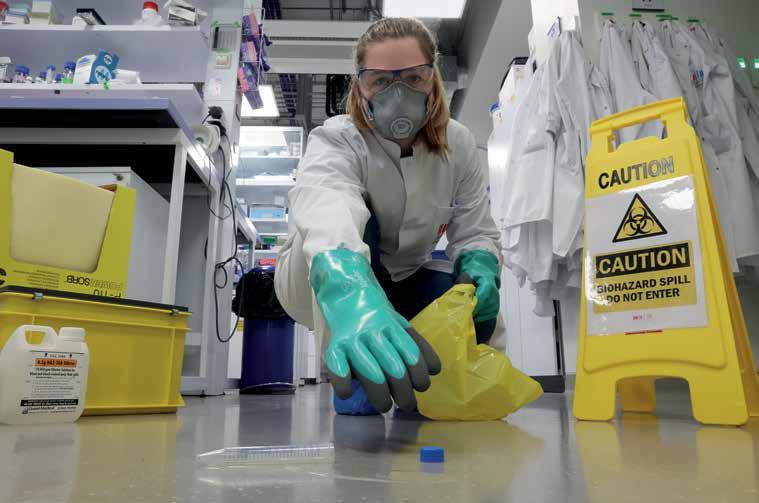
1 minute read
Safety in the lab: One for all and all for one
While handling hazardous chemicals or biological agents is often an integral part of working in the lab, it should not affect the health of scientists. This is where biosafety officers come in. They are experts at assessing risks in a laboratory and they can help researchers stay safe while doing experiments. “Every research institution must have safety procedures to deal with risks,” explains Marie Fossépré, biosafety officer at the LCSB since 2018. “Our role is to systematically develop mitigation strategies so that everyone is protected at any time or location.”
The job of a biosafety officer takes many forms, from fulfilling legal requirements to approving chemical purchase for example. “Providing protective equipment goes hand in hand with implementing best practices in the lab and thinking about sustainability in the long run. The outcome of all these measures put together is a good work environment coupled with high quality results.” says Marie Fossépré.
Advertisement
At the LCSB, the biosafety officers raise awareness among researchers right from the start: they organise trainings for newcomers, provide essential information to staff members working in the lab and help them to adopt the correct habits early on. “We are here to facilitate research and ensure that it is done in a safe way, but safety is everyone’s responsibility,” Marie Fossépré points out. “Following the safety measures is compulsory to protect both yourself and your colleagues.”
After the first trainings, the collaboration between scientific staff and the biosafety officers goes on. The latter rely on the feedback from researchers and lab technicians to pinpoint safety issues. Someone is not comfortable with handling a specific substance: The biosafety officers will study the safety data sheet, which comes with every hazardous material, and implement the relevant safety precautions. A research team would like to start a novel experiment: Marie Fossépré and her colleagues will perform a risk assessment before it starts and introduce new safety processes if needed. They also organise collaborative exercises called “safety mapping” on a regular basis to review the activities of a given research group and identify areas of improvement. And what if – despite all the precautions – there is an incident, a chemical spill for example? Of course, the biosafety officers will be there to assist.
They visit the labs as often as possible to ensure that the protective equipment is working properly or that rules are being upheld. “But we are not a sort of police,” assures Marie Fossépré. “We are partners who can provide expertise, advise the researchers and contribute to everybody’s safety at the LCSB.” Everyone has a role to play, it is a joint effort: working together to build a common and sustainable safety culture. ¢










